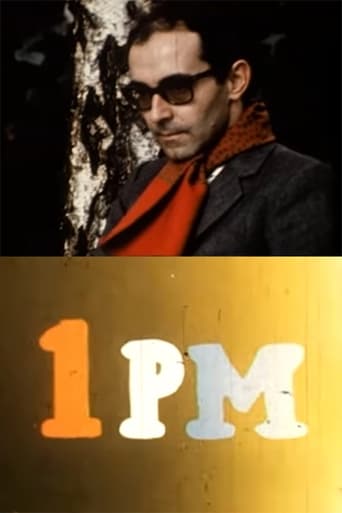

First of all let me say that this movie is really out there. I give it a rating only because it is an important, and almost unknown moment in film history. One P.M. is a missing piece of the Godard collection and it really deserves its place because in a sense it represents his most radical tendencies taken to their logical end, the usurpation of the film itself by the cinematographer and rest of the crew. This upheaval may not have been so compelling at the time but, retrospectively it is a tremendous statement about how far the boundaries were being pushed during the late 60's.I don't exactly understand why Godard gave up on this project, but maybe he felt it could not convey what he was trying to achieve or maybe as a Frenchie he felt alienated by the American scene with all its exuberance and diversity--represented best in the scene of the Black Panthers where the crew is in the film and the camera oscillates between Godard and the producers who watch stiffly from a distance and Black Panthers and the crew that are dancing, beating wildly on their instruments.The first scene, a lengthy monologue by Godard followed by a discussion with the crew makes obvious that Godard cultivates this self-reflexivity. As the film progresses the crew becomes disenchanted with Godards control of this to some degree and begins to take things into their own hands portraying him as an outsider and themselves as insiders who can "dig" the American scene. Almost the exact same progression occurs in Symbiopsychotaxiplasm: Take Two (the archival footage from the 1968 outtakes) where the director William Greaves sets up a scenario for the crew to be on set with the actors who play out a short psychodrama. The crew revolts against the control of the director, which, turns out to be part of his plan and they begin to film their own meetings where they analyze what is going on and plot and scheme. It is definitely a statement of the anarchic relationships that began to form that both of these films were made during the same year.
... View MoreEldridge Cleaver, Jean-Luc Godard, Tom Hayden, Rip Torn all hanging around Chicago, around the time of the Chicago Eight trial (I think). The talks Tom Hayden gave in this movie sum up the feelings most young people had about the political system at the time. His talks in this movie hit home like nothing else I've ever seen or heard. This is a GREAT documentary of the late sixties/early seventies in Chicago. The film also features Jean-Luc out on the south side streets of Chicago grooving on some chanting and percussion, the Sears tower in the background. I also remember an image of Rip Torn riding up in a construction elevator (dressed as an Indian?).
... View More